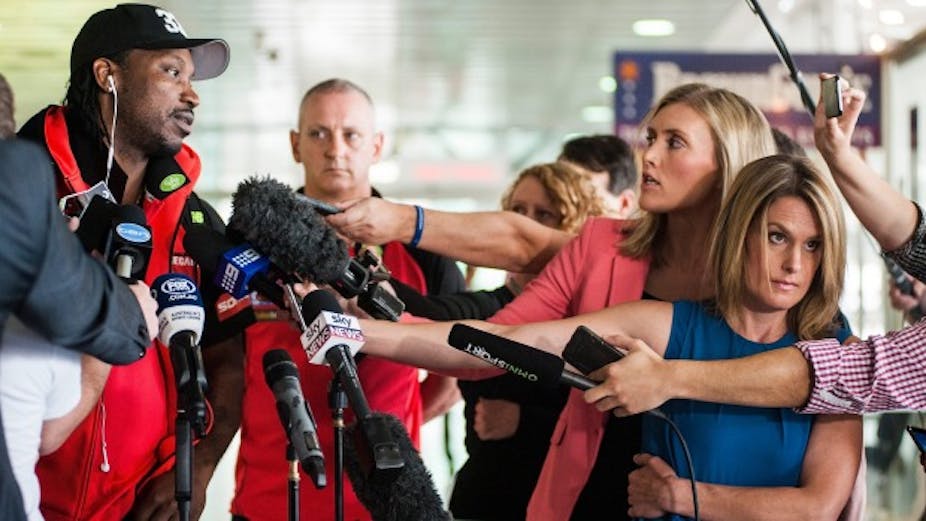Sexual harassment at work is extremely common. In fact some studies suggest that most women will experience some type of sexual harassment during their working lives.
A range of behaviours may constitute sexual harassment at work, and these same behaviours can be construed differently in different contexts. This leads to significant confusion about the issue of sexual harassment, illustrated in the reaction to recent incidents involving inappropriate behaviour towards women by politician Jamie Briggs, and cricketer Chris Gayle.
Some commentators have played down the incidents. For example, by suggesting the reaction to the Briggs incident may have been overzealously politically correct or dismissing Gayle’s comments as flattering compliments any beautiful woman should expect.
According to the Australian Human Rights Commission:
Sexual harassment is any unwanted or unwelcome sexual behaviour, which makes a person feel offended, humiliated or intimidated. Sexual harassment is not interaction, flirtation or friendship which is mutual or consensual.
So, the clue to whether an incident can be considered sexually harassing is if it is unwelcome, non-consensual and disrespectful to the recipient. Some obviously harassing behaviours may include verbal put-downs, abusive remarks and marginalising behaviours on the basis of gender. Other behaviours may be less obviously harmful and these may be excused by perpetrators as intended to be flattering or flirtatious. These are often interactions with a sexual overtone where someone’s professional role is ignored or belittled, or where the interaction serves to boost the ego or self-importance of someone else.
Despite the difficulty defining the exact nature of sexual harassment, and the diversity of behaviours implicated, there is no doubt that workplace sexual harassment has a significant impact on those who experience it. The effects can range from disengagement and dissatisfaction in the workplace to significant physical and mental health problems. According to a review published in the journal Aggression and Violent Behaviour:
Sexual harassment claims more victims than any other sexual crime. It affects a significant proportion of working women and it affects their personal lives and professional functioning, thus preventing them from advancing in the workplace, and affecting one of their fundamental human rights; the right to work with dignity.
Sexual harassment is more likely when the environment is conducive, for example, in the sexually charged, alcohol-fuelled setting of a crowded bar late at night (as in the incident involving Jamie Briggs), or in male dominated professions, such as sport, where the culture may foster misogynist attitudes (as in the incident involving Chris Gayle).
But even in environments that may be highly conducive to sexual harassment it is not the case that sexual harassment will automatically occur. How do we know who will become a perpetrator in such an environment, and who will not? Who is most likely to sexually harass others?
Research shows that most perpetrators of sexual harassment are likely to be male, but beyond that we know surprisingly little about what leads to sexual harassment in any situation. Some studies suggest that perpetrators are more likely to be married, older, more educated, and in a higher ranked position in the organisation than the person who is harassed.
On the other hand, other studies have shown that peers are the most frequent harassers. It is probably not surprising that sexual harassers have been shown to be more willing to exploit others, to lack social conscience and to engage in immature and irresponsible behaviours.
However, it is not possible to construct a typical profile of a “sexual harasser”. Harassers are represented at all ages and levels of social status and occupation, and may be intentionally malicious or simply ignorant about appropriate standards of behaviour.
Swift sanctions have been imposed on Jamie Briggs and Chris Gayle demonstrating recognition of the need to respond effectively to incidents of sexual harassment. However, we clearly need to keep working to ensure that everyone is educated about respectful behaviour in the workplace.
The availability of educational programs and training on sexual harassment is a useful step but we also need to address some of the underlying social and cultural issues that perpetuate sexual harassment such as sexism, misogyny and the misuse of power in the workplace.

